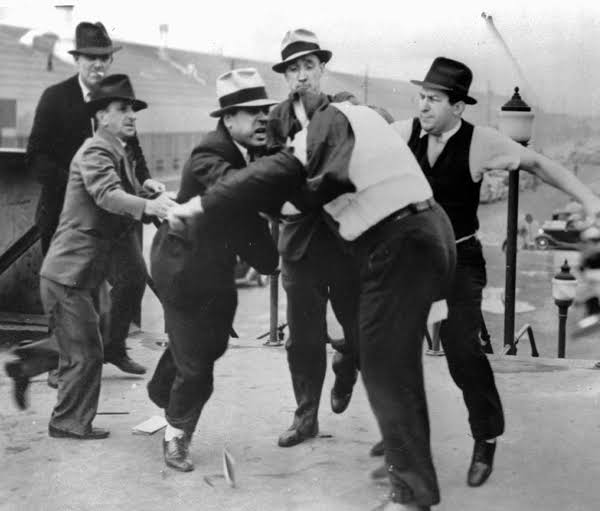While writing the recent “May Day” post, HG was distressed that the history of labor unions in the USA isn’t taught to the young people in our schools. There have been tragedies: The Triangle Shirtwaist Factory fire was one of them–scores of young immigrant women (Some known to HG’s late Mother) died in that blaze. An early union was the IWW (International Workers of the World.) The union members (“Wobblies”) were often attacked by police. A number were killed and their martyrdom immortalized in song: “I dreamt I saw Joe Hill last night, alive as you and me. But, Joe, I said, you’re a long time dead. I never died, said he.”). After the “Ludlow Massacre” of 1914, one would think industrial management would abandon hiring detective agencies to battle union and union organizing. But, no. Henry Ford would not tolerate labor unions and he created his own private army to violently stop union organizing. This army was called “The Service” or “Internal Security Department”. From the 1920’s through 1945, it was headed by a very tough guy named Harry Bennett, an ex-prize fighter and sailor. He recruited equally violent men for “The Service”: Ex-prize fighters and wrestlers; released convicts; former policemen; street fighters. There were 5,000 men (or more) in “The Service”, the largest private army in the USA. In 1937 at the “Battle of the Overpass” Bennett’s thugs severely beat a United Auto Workers (UAW) man who was handing out pamphlets to workers. The thugs confiscated all cameras but an intrepid photographer managed to get one plate out of his camera. When the photo of the beating was published, it swayed public opinion against Ford and for the UAW. After the UAW man was rescued from the beating, covered in blood, subsequent photos increased the antipathy toward Ford. The company was finally unionized and when Henry Ford died, his heirs fired Bennett.
Labor Unions: History and Tragedy
May 11th, 2023 § 0 comments
Leave a Reply